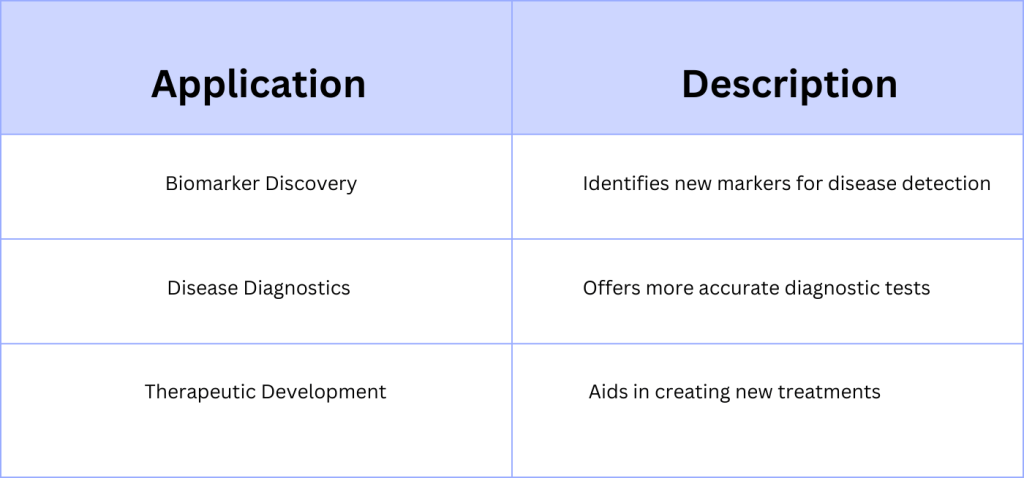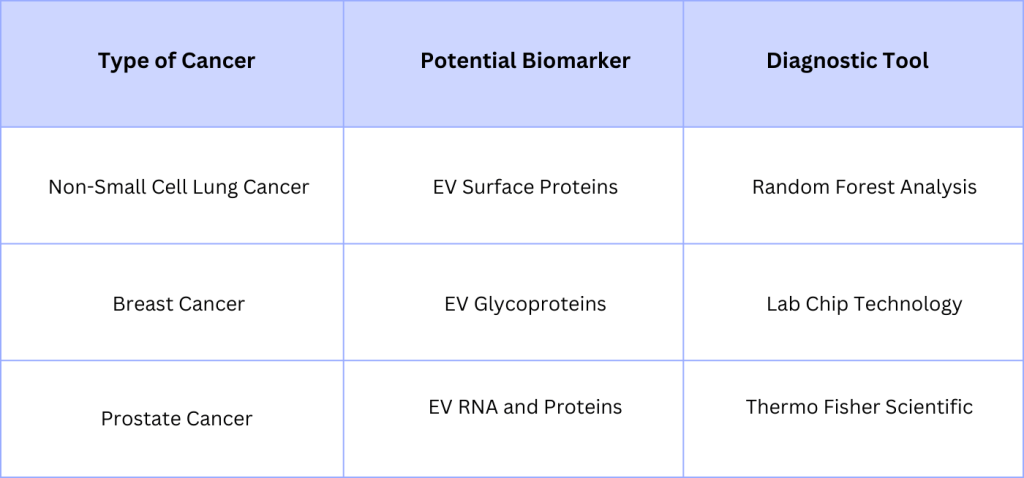In the ever-evolving landscape of cancer research, extracellular vesicles (EVs) have emerged as pivotal players harboring potential game-changing insights into diagnosis and therapy. These tiny membrane-bound structures, secreted by all cell types, carry a wealth of molecular information reflective of their originating cells. Understanding their role offers promising advancements in both cancer therapeutics and biomarker discovery.
As we delve deeper into the types of EVs and their molecular content, it becomes evident that harnessing these vesicles can transform how we detect and treat cancer. Advanced isolation techniques, including microfluidics and innovative bioinformatic tools, are revolutionizing our ability to analyze these biomolecules effectively. This article explores the cutting-edge methodologies and clinical implications surrounding EV proteins, emphasizing their diagnostic and therapeutic potential in oncology.
Ultimately, overcoming the challenges inherent in EV research—such as isolation, characterization, and reproducibility—remains crucial for translating findings into practice. By investigating the exciting future directions for EV utilization, this article highlights their transformative role in early cancer detection and precision therapeutic strategies, potentially redefining the cancer treatment landscape.
The Role of Extracellular Vesicles in Cancer
Extracellular vesicles (EVs) are tiny particles that cells release into the body. In recent years, scientists have discovered their significance in cancer. EVs can influence how cancer develops and spreads. They carry important information from cancer cells to other parts of the body. This can help tumors grow and even resist treatment. Studying EVs can therefore provide insights into cancer behavior and progression. Researchers are exploring how EVs can aid in early detection and provide targets for new therapies.
Types of Extracellular Vesicles
There are several types of extracellular vesicles. The main types include exosomes, microvesicles, and apoptotic bodies. Exosomes are the smallest and form inside cells before release. Microvesicles are larger and bud directly from the cell membrane. Apoptotic bodies form when cells die. Each type of EV has a distinct role and content. Understanding these differences is key to using them in cancer research and treatment.
Molecular Content of EVs
The molecular content of EVs includes proteins, RNA, and lipids. These molecules provide clues about the cell they come from. For instance, EVs from cancer cells often carry unique proteins. These proteins can be potential biomarkers useful for diagnosing cancer. Researchers analyze this content to find true biomarkers for various diseases. This analysis aids in the development of new diagnostic tests and treatments. Understanding EV molecular content is, therefore, crucial in modern cancer research.
Advanced Isolation Methods for EVs
Isolating extracellular vesicles (EVs) is crucial for many studies. Advanced methods make this process more efficient and accurate. New techniques help in obtaining pure EV samples. This purity is vital for further analysis and research.
Microfluidics
Microfluidics is a cutting-edge method for isolating EVs. It uses tiny channels to separate vesicles from other particles. This method is fast and precise. It allows for high-throughput processing of samples. With microfluidics, researchers can isolate EVs with specific traits. This makes it useful for studying diseases and developing treatments.
Novel Bioinformatic Techniques
Bioinformatic techniques offer new ways to analyze EVs. These methods use computer algorithms to explore large datasets. For instance, random forest is one such technique. It helps identify patterns and predict outcomes. Bioinformatics can uncover potential biomarkers for diseases like non-small cell lung cancer. These markers can aid in diagnostic biomarker discovery. Tools from Thermo Fisher Scientific and Methods Mol Biol help researchers understand EV surface proteins. This understanding can lead to true biomarkers with clinical utility. Using bioinformatics, researchers can integrate data from resources such as J. Extracell and Cell Proteomics. This approach enhances the potential for discoveries in disease diagnostics and therapeutic development.

Analyzing EV surface proteins has many applications. It plays a role in finding diagnostic biomarkers. It also contributes to developing therapies. These advancements continue to improve healthcare, particularly in areas like cancer treatment and management.
Analyzing EVs for Biomarker Discovery
Extracellular Vesicles (EVs) are tiny particles released by almost every cell in the body. They carry proteins, lipids, and RNA from their cell of origin. Analyzing EV surface proteins can reveal much about a cell’s health. This makes them valuable in discovering potential biomarkers. Researchers are especially interested in proteins found on the surface of EVs. These proteins can serve as true biomarkers that indicate different diseases or health states.
Diagnostic Value of EV Proteins
EV surface proteins have great potential as diagnostic biomarkers. They can help doctors detect diseases early and accurately. For example, certain proteins may increase in number when a disease is present. This makes them useful in non-invasive tests. Current studies in journals like J. Extracell and Cell Proteomics show the growing interest in this area. Methods Mol Biol and labs like Thermo Fisher Scientific also develop ways to analyze these proteins efficiently. A new method uses a tool called Lab Chip, which helps in pinpointing key proteins for diagnostics.
Current Applications in Cancer Diagnostics
EV surface proteins are finding roles in diagnosing cancers like non-small cell lung cancer. They help in identifying cancer stages and types more precisely. The use of random forest algorithms aids in this process by analyzing complex data to find true biomarkers. By looking at EV proteins, oncologists can improve treatment plans and outcomes. This approach offers a promising avenue for cancer research. It helps clinicians reach a deeper understanding of cancer biology and ultimately improve patient care. Researchers continue to explore the clinical utility of these proteins in diagnosing and monitoring cancer progression.

EV surface protein analysis opens the door to new methods of diagnosing and treating diseases. Its role in early detection and precise diagnosis continues to grow, promising a future of better health outcomes.
Clinical Implications of EV Protein Profiling
The analysis of extracellular vesicle (EV) surface proteins holds great promise in healthcare. By studying these proteins, scientists can uncover potential biomarkers for various diseases, including non-small cell lung cancer. This analysis aids in biomarker discovery, disease diagnostics, and could improve treatment options. The potential clinical utility is vast, offering insights into disease progression and opening new avenues for personalized medicine.
Precision Oncology Frameworks
In oncology, precision and personalization are key. EV protein profiling can help create more tailored treatment plans. By identifying true biomarkers, doctors can predict how a patient might respond to specific therapies. This helps in selecting the most effective treatment and can improve outcomes. For instance, using techniques like random forest models, researchers can better classify types of cancer or their stages, which is vital for non-small cell lung cancer management.
Therapeutic Strategies Using EVs
Extracellular vesicles are not just useful for diagnostics. They also have potential in therapeutic development. EVs can serve as delivery vehicles for drugs, targeting diseased cells while saving healthy ones. This reduces side effects and improves treatment efficiency. Furthermore, engineered EVs could carry therapeutic molecules to specific sites in the body, offering a new way to treat complex diseases. Researchers continue to explore these strategies to harness the full potential of EVs.
Here’s a simple list to summarize the therapeutic benefits of EVs:
- Targeted drug delivery
- Reduced side effects
- Improved treatment efficiency
- Potential for new molecular therapies
Innovative Approaches to Biomarker Stratification
Analyzing EV (extracellular vesicle) surface proteins opens new doors for medical research. These tiny particles, released from cells, carry valuable information. By studying their surface proteins, scientists can find potential biomarkers. Biomarkers are substances that indicate a disease or condition. This has huge implications for non-small cell lung cancer and many other diseases.
Machine Learning in EV Analysis
Machine learning plays a big role in analyzing EV surface proteins. Using Lab Chip technology, researchers can collect vast amounts of data. This information is then processed using advanced algorithms like random forest. This helps identify true biomarkers with precision. Companies like Thermo Fisher Scientific are at the forefront of this technology.
Here’s how machine learning benefits EV analysis:
- Data Processing: Machine learning can handle large datasets from EV samples.
- Pattern Recognition: It can find complex patterns that human analysis might miss.
- Prediction: Algorithms can predict potential biomarkers for disease diagnostics.
These steps improve the clinical utility of EV analysis. Methods Mol Biol and J. Extracell Cell Proteomics are key resources for those interested in this field. With machine learning, the future of diagnosing and treating diseases looks promising.
Challenges in EV Research
Research into extracellular vesicles (EVs) unlocks many possibilities in medicine and science. However, it is fraught with challenges. These hurdles can obstruct the potential advancements in biomarker discovery, disease diagnostics, and therapeutic developments. Here, we delve into the main obstacles researchers face in EV research.
Isolation and Characterization Issues
One of the primary challenges in EV research is the isolation and characterization of these particles. EVs are tiny and exist in complex biological fluids, making it hard to separate them without contamination. Different methods exist, such as centrifugation and filtration, but they each have drawbacks.
- Centrifugation can be time-consuming and may not fully purify the EVs.
- Filtration techniques often struggle with clogging and loss of vesicles.
These issues impede the ability to study true biomarkers within the EVs accurately. Ensuring the clinical utility of potential biomarkers becomes difficult when isolation methods are inconsistent or imprecise.
Reproducibility and Standardization
Another significant challenge in EV research is the lack of reproducibility and standardization. Different research labs use various methods, resulting in inconsistent findings across studies. Without standard protocols, it is hard to compare data or draw reliable conclusions.
- Varying laboratory techniques make it challenging to identify consistent diagnostic biomarkers.
- Lack of standardization affects the therapeutic development process since results may not be repeatable or applicable in clinical settings.
Through improved standardization and methods, like those provided by companies such as Thermo Fisher Scientific and studies published in sources like Lab Chip, researchers may overcome these challenges. Establishing reliable methods ensures that EV research can effectively contribute to discovering new biomarkers and advancing treatments for diseases such as non-small cell lung cancer.
Future Directions for EV Utilization
As research progresses, the use of EV surface protein analysis is set to expand. This expansion will enhance biomarker discovery and revolutionize disease diagnostics. The future holds promising avenues for improving patient care and clinical outcomes.
Potential in Early Cancer Detection
EV surface proteins show great promise in early cancer detection, especially for non-small cell lung cancer. By analyzing these proteins, researchers can identify potential biomarkers that signal the presence of cancer early. Early detection means treatment can start sooner, offering better chances of success.
Integration into Therapeutic Modalities
EVs can also play a role in therapeutic development. By understanding their surface proteins, scientists can design better drugs that target these proteins. This can lead to more effective treatments for various diseases. Moreover, EV-based therapies can be tailored to individual patients, personalizing healthcare and enhancing clinical utility.
List: Steps in Integrating EV Surface Proteins into Therapies
- Identify true biomarkers through EV analysis
- Develop targeted therapies against these proteins
- Test efficacy using methods like random forest
- Refine and personalize treatments for clinical use





